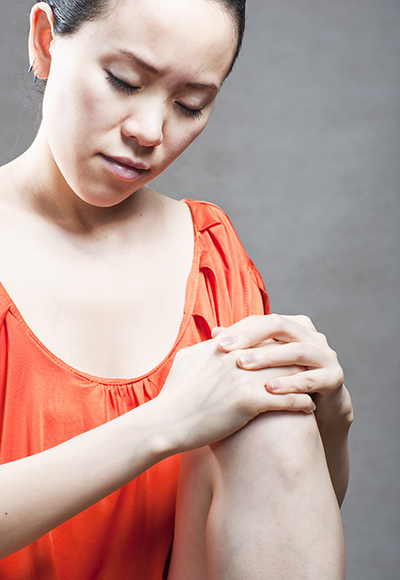
New research supported by the NIH’s National Institute of Arthritis and Musculoskeletal and Skin Diseases (NIAMS) with funds from the American Recovery and Reinvestment Act, has identified 14 genes linked to juvenile idiopathic arthritis (JIA), the most common type of arthritis affecting children. The new study brings the number of confirmed genes in JIA to 17 and represents an important advance toward better understanding and treatment of JIA.
Published in Nature Genetics, the international study used technology called the Immunochip array to analyze DNA samples from 2,816 children with JIA collected at more than 40 pediatric rheumatology clinics in the United States and Europe and 13,000 healthy controls to look for differences in genes, said Susan Thompson, Ph.D., a leader of the study and researcher in the Division of Rheumatology at Cincinnati Children's Hospital Medical Center. Carl D. Langefeld, Ph.D., a biostatistician at Wake Forest University School of Medicine in Winston-Salem, NC, led the team of statisticians completing this large analysis. In addition to the 14 new genes, the analyses confirmed three previously discovered genes and suggested that another 11 genetic regions might be involved in the disease.
JIA, an autoimmune disease, has several different, but related, forms. The genes studied were from children with two common JIA subtypes — polyarticular and oligoarticular. Many of the implicated genes are involved in the development, activation or differentiation of T cells — a type of white blood cell that identifies, attacks and rids the body of infectious agents.
Prior to this study only three genes — the human leukocyte antigen (HLA) region, PTPN22 and PTPN2 — had been shown to be involved in JIA, a disease that is believed to have both genetic and environmental components. The confirmation of those three genes, plus the finding of numerous others could have two important implications, said Thompson.
“If we can find a novel disease mechanism, that can inform drug design”, she said. Also, by comparing genes, scientists might further define disease subtypes, which could help doctors determine which children are most likely — or unlikely — to respond to a particular treatment before they try it. This knowledge, she said, could help with the development of treatment protocols.
The study, which took two years to complete and is the largest collaborative study of JIA to date, has opened the door to other collaborations that likely will provide more clues about JIA, according to Thompson. The next step, she said, is an analysis of DNA from 1,500 more patients to help understand or confirm the role of the 11 additional genetic regions identified as having a possible connection in the current study.
Hinks A, et al. Dense genotyping of immune-related disease regions identifies 14 new susceptibility loci for juvenile idiopathic arthritis. Nat Genet. 2013 Apr 21. doi: 10.1038/ng.2614. [Epub ahead of print]
The mission of the NIAMS, a part of the U.S. Department of Health and Human Services' National Institutes of Health, is to support research into the causes, treatment and prevention of arthritis and musculoskeletal and skin diseases; the training of basic and clinical scientists to carry out this research; and the dissemination of information on research progress in these diseases. For more information about the NIAMS, call the information clearinghouse at (301) 495-4484 or (877) 22-NIAMS (free call) or visit the NIAMS website at https://www.niams.nih.gov.
